With a host of new partners and an open call for research proposals, the $41-million National Offshore Wind R&D Consortium is ready to make a splash.
Wind Energy Technologies Office
October 21, 2019Momentum builds for partnership advancing R&D for the U.S. offshore wind industry
With a host of new partners and an open call for research proposals, the National Offshore Wind R&D Consortium—established with $41 million initial funding from the U.S. Department of Energy (DOE) Office of Energy Efficiency and Renewable Energy (EERE) Wind Energy Technologies Office (WETO) and the New York State Energy Research and Development Authority (NYSERDA)—is ready to make a splash.
This article is part of the
Data on the potential offshore wind resource suggest more than 2,000 gigawatts (GW) could be accessed along the coasts of the United States and the Great Lakes. In New York State alone, leaders have committed to 9,000 megawatts (MW) of offshore wind energy development by 2035—enough energy to power up to six million homes.
The consortium, designed to promote U.S. offshore wind industry development, is a collaboration among DOE, NYSERDA, the Carbon Trust, Renewables Consulting Group, DOE’s NREL, the Advanced Energy Research Technology Center at Stony Brook University, and other organizations. Its goal is to support initiatives that remove technical barriers to offshore wind development across the nation. And, thanks in part to Walter Musial from NREL, it has a plan to guide the way there.
“The overarching goal of the consortium is to fund research that is relevant to the developers of offshore wind power plants,” Musial said. “The consortium has a number of advisory panels designed to help gain insight into various sectors of the industry, so we can steer our R&D funding in the direction that will deliver the greatest impact.”
Last year, the consortium surveyed industry to develop an initial R&D roadmap outlining priorities for the U.S. offshore wind industry. Musial, a principal engineer who leads the offshore wind research effort at NREL, spearheaded roadmap development as technical director for the consortium.
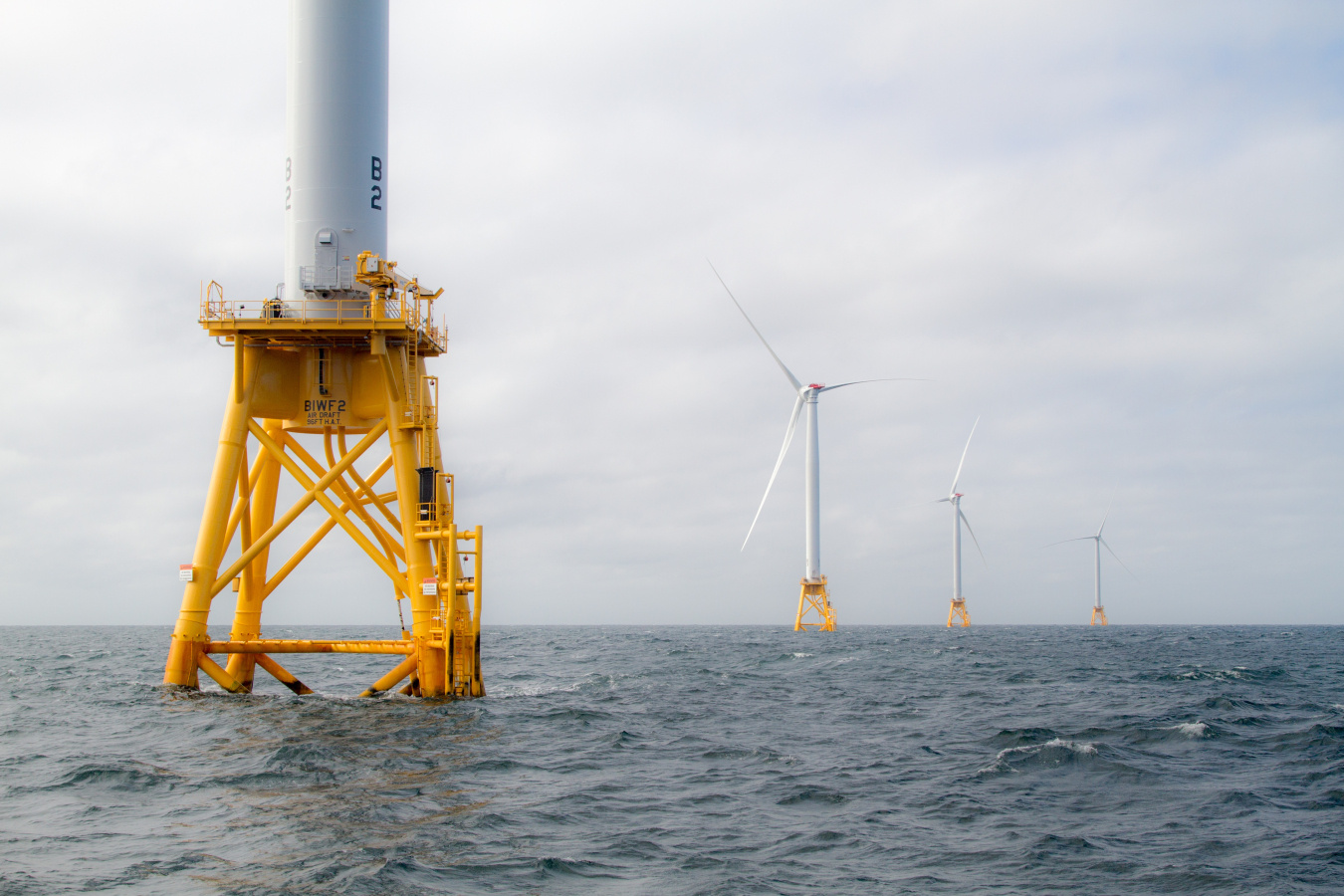
The 30-MW Block Island Wind Farm off the coast of Rhode Island is currently the only operational commercial offshore wind farm in the United States, but with the help of the consortium, the industry is poised for major growth. Photo by DOE
“My role is to guide the consortium in the technical aspects of how it prioritizes research,” explained Musial. “This roadmap does just that—outlining what technology innovations will be needed to address the challenges in each of the five U.S. offshore regions, with the end goal of making offshore wind cost competitive in the United States.”
The roadmap also guided development of the consortium’s first solicitation for R&D proposals, which is open through the end of December 2019 and aims to fund projects related to three pillars of offshore wind technology research:
- Offshore wind power plant technology advancement, which includes optimizing the performance of wind plants, reducing the costs of turbine support structures, developing innovative mooring and anchoring technologies for floating wind, and reducing the cost and risk associated with the transmission and distribution of electricity from offshore wind
- Offshore wind power resource and physical site characterization, which includes comprehensive wind resource assessment and the development of a meteorological and oceanographic reference site
- Solutions to improve and accelerate supply chain, installation, and operations and maintenance, including using advanced data analytics to optimize the efficiency of offshore wind components.
Consortium Members and Strategic Partners
- DOE and its National Laboratories
- NYSERDA
- Advanced Energy Research and Technology Center at New York State University at Stony Brook
- Anbaric
- Avangrid
- EDF Renewables
- EDP Renewables
- EnBW North America
- Equinor
- GE Renewables
- Innogy
- Maryland Energy Administration
- MassCEC
- Northland Power
- Ørsted
- Renewables Consulting Group
- Shell
- The Carbon Trust International, Inc.
- Vineyard Wind
- Virginia DMME
“The solicitation points the research community toward the consortium’s highest-priority topics and the most impactful results the industry needs to move forward,” said Musial. “Not only will this research inform the industry’s near-term projects, but at the same time, it will advance longer-term WETO program goals to accelerate the development of new wind energy technologies, which is a win-win.”
The consortium is accepting proposals on a rolling basis through December 31, 2019, and plans to offer additional competitive solicitations over the next three years based on additional R&D priorities identified in the roadmap.
In 2019, seven new partners—Commonwealth of Virginia Mines Minerals & Energy Department (Virginia DMME), Maryland Energy Administration, and Massachusetts Renewable Energy Center (MassCEC); offshore wind plant developers Energie Baden-Württemberg AG (EnBW) North America and Vineyard Wind; transmission developer Anbaric Development Partners; and turbine manufacturer GE Renewables—joined the consortium, which further signals the momentum of offshore wind industry growth and boosts the potential funding available for industry-relevant R&D.
“With partners making contributions to the consortium in addition to the core funding commitments from DOE and NYSERDA, the amount of available research funding continues to grow,” added Musial.
Looking ahead, Musial said the consortium aims to transition from a partially federally funded effort to a self-sustaining nonprofit fully funded by research partners. The consortium has hired a full-time executive director to help make this happen.
“State commitments to procure offshore wind have grown from zero to about 20,000 MW in the last few years, so there’s a new sense of urgency among developers and leaders across the nation to reduce uncertainty in key technical areas,” Musial said. “The timing is perfect for the consortium to provide a relevant and long-lasting platform to guide innovations that truly serve the industry. It’s an exciting opportunity for everyone to come together and focus collaboratively on the most critical R&D issues.”
-
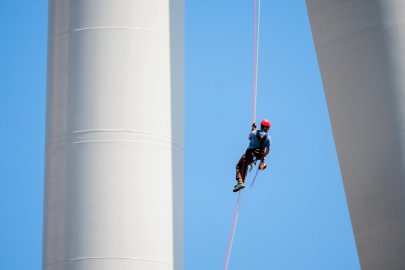 Researchers are analyzing alternative blade concepts that could almost double the size of today’s blades.
Researchers are analyzing alternative blade concepts that could almost double the size of today’s blades. -
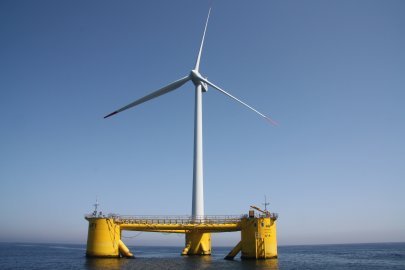 A new scalable offshore floating wind system provides novel solutions to cut costs and overcome challenges of deepwater offshore environments.
A new scalable offshore floating wind system provides novel solutions to cut costs and overcome challenges of deepwater offshore environments. -
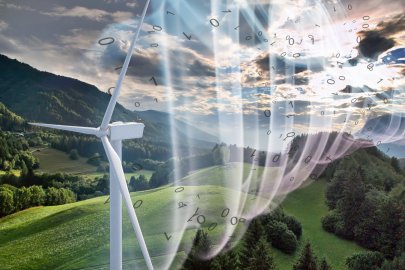 A2e initiative addresses the need to have reliable, applicable wind data by establishing and funding the Data Archive and Portal (DAP).
A2e initiative addresses the need to have reliable, applicable wind data by establishing and funding the Data Archive and Portal (DAP). -
System operators have a new tool for bringing intuition to the deluge of wind data—a visualizer for wind power forecasts called WindView.
-
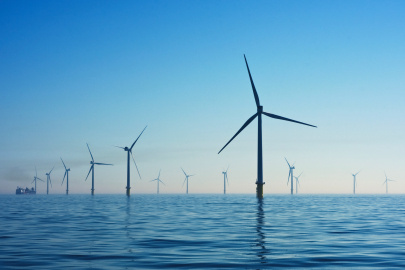 Offshore wind representatives met this spring to discuss meteorology and oceanography research to support offshore wind projects in the U.S.
Offshore wind representatives met this spring to discuss meteorology and oceanography research to support offshore wind projects in the U.S.
Explore previous editions of the Wind R&D Newsletter or browse articles by topic:

